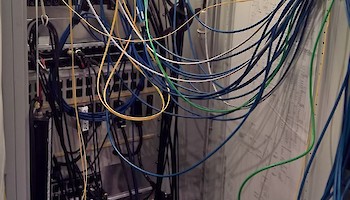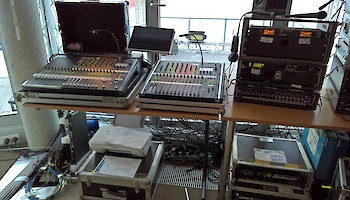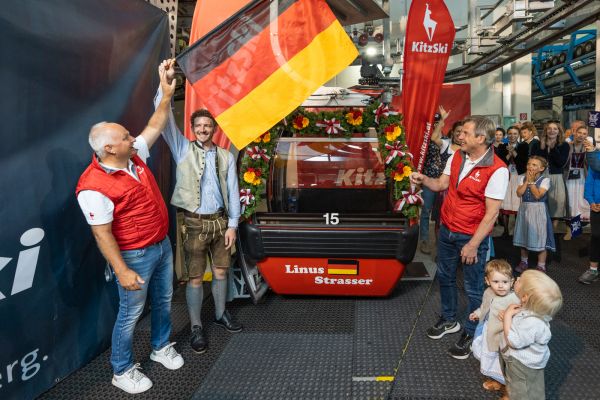Pure Technology Down the Streif
Annual flow of investments
Spectators are well aware of the work on the racetracks or in the stadium area. These are visible to the naked eye, but the technology behind them is often overlooked. Without it, however, such a major event could not be staged in the first place.
An incredible 24 kilometres of hybrid cables were laid along the Streif and Ganslern racetracks last summer. To the delight of host broadcaster ORF, which now benefits from all camera positions being equipped with state of the art technology.
The entire racetrack is wired with a 100 km fibre optic loop circuit, which guarantees perfect data transmission. This digital transmission ensures there is no time delay in the public address system throughout the entire arena. Hybrid cables, energy and fibre optics can be found in more than 60 ground shafts along the Streif, which are extremely difficult to locate and mark by GPS with the current snow masses.
This, however, is by no means the end of the story. To send spectacular images of the Hahnenkamm races out into the world, not only good cameramen, camera technology and directors are required, but on-site technology must also be perfect. It's all about quality! Viewers expect nothing less than crystal-clear image quality.
A camcat (cable-mounted camera) whizzes from the Hausbergkante to the grandstands and captures the racer’s run down from the entrance to the “Kompression” section to the final finish jump in maximum resolution. In order for everyone to be able to follow these breathtaking images, a total of eleven video walls will be installed, with three alongside the Streif racecourse. Meanwhile, six scoreboards keep constant track of the current placings and split times.
Countless Wi-Fi hotspots are also provided from the start to the finish line, which are not only of great importance to the organizing committee and the journalists, but also for the spectators. Photographers transmit pictures directly from the racecourse to their editorial staff in order to keep not only spectators, but also athletes and their sponsors constantly up to date via social media channels and provide them with fresh information.
All communication entities then merge in the finish stadium. Contrary to expectations, the team that manages this is small, with no more than ten people working on its smooth processing.
In accordance with FIS regulations, 100 pairs of copper wires were installed along the racetracks for timekeeping purposes. The Downhill is equipped with eleven positions consisting of seven split times, three speed measurements and four reserve starts. The Super G has four split times, one speed measurement and one reserve start. The slalom is equipped with three split times. A Swiss timing team will take care of timekeeping on-site. Hahnenkamm-Race OC deal with the technical processing. Transfer of the accrued data to the host broadcaster is a highly complex undertaking, and one that must be perfectly implemented during the first training session.
Two technicians, Manuel and Hans Gosch, are responsible for timing coordination, the video walls, scoreboards as well as TV and commentators. Various specialist companies who, amongst other things are responsible for the graphic implementation, also provide support.
This all requires power. And lots of it. An important partner of the Hahnenkamm Race, Stadtwerke Kitzbühel provides a smooth energy supply in order to cater for heightened energy requirements. "We provide the support the Hahnenkamm Races need, the power requirement is enormous, not only for the races, but also for the many side events. Sufficient energy must be available," said Andreas Kronberger, Head of Stadtwerke Kitzbühel.
The Bergbahn AG Cable Car Co. provides the lines alongside the racetracks. Richard Prethaler, responsible for the electrical systems, and his team take care of the electrical connections and provide all the technical know-how. He emphasises the difficulty of ensuring the power supply in the prevailing weather conditions (humidity), which is why those responsible are also prepared for power failures. Various large power distributors provide the energy supply, while the most important components and emergency lighting are backed up externally in the event of a power failure. "We want to work innovatively and I am hard pressed to think of any other ski racing event that is equipped with such comprehensive technology," says Hans Gosch.






